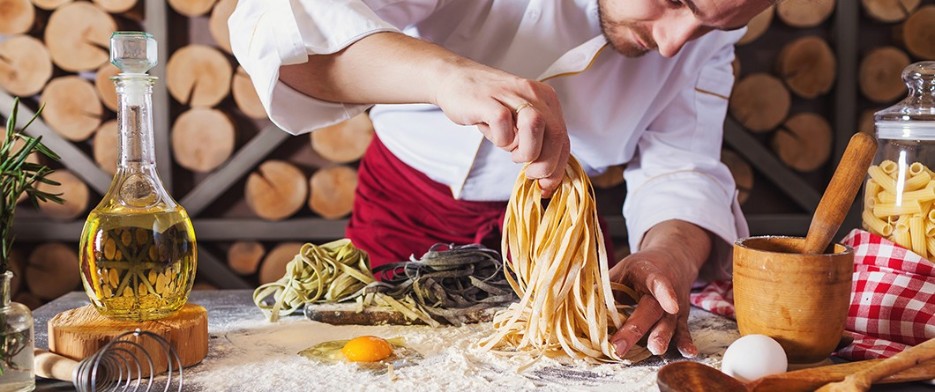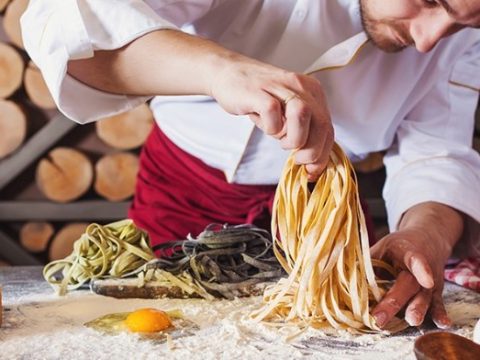7 Common Mistakes to Avoid When Cooking Pasta
You don’t need to be a masterchef to know that “al dente” isn’t a dental clinic, that penne has nothing to do with birds, or that cannelloni and cannoli are completely different dishes. Still, there are details and cooking habits that can make the difference between a perfect bowl of pasta and a disappointing one.
Let’s break down the biggest pasta myths—like adding oil to the boiling water—and learn how to make delicious pasta from scratch, step by step.
1. Not Adding Enough Salt to the Water
A pinch is too little, a whole tablespoon might be too much. While recipes often say “salt to taste,” the truth is: pasta water should be salty like the sea. Proper salting boosts the flavor of the pasta itself, not just the sauce.
Don’t be afraid to taste the boiling water and adjust. It’s a small step with a big impact.
2. Ignoring Pasta Shape When Choosing the Sauce
Some pasta types are made to pair with specific sauces:
- Short pasta like penne, rigatoni, or maccheroni go well with chunky or meaty sauces—the sauce clings to the grooves and holes.
- Long pasta like spaghetti, fettuccine, and linguine pair better with smooth, creamy, or oil-based sauces.
3. Adding Oil to the Boiling Water
This is one of the most common myths passed from generation to generation. People say oil prevents pasta from sticking. The truth? It coats the pasta in oil, making it slippery—and sauce won’t stick well.
Want to prevent sticking? Just stir the pasta during the first few minutes of boiling. That’s all it takes.
4. Not Tasting the Pasta While It Boils
Professional chefs know by instinct when pasta is perfectly al dente. For the rest of us, there’s one simple method: taste it.
During the second half of the boiling time, taste a piece every 30–60 seconds to get the perfect bite—not too soft, not too firm.
5. Rinsing Pasta After Boiling
This is a big no-no, especially in Italian kitchens. Freshly boiled pasta is coated with starch—the key to helping sauce cling to it. If you rinse it, you wash away the starch, and the sauce will slide right off.
Exception: You can rinse pasta if you’re making a cold pasta salad.
6. Using Too Much Sauce
It’s tempting to drown pasta in sauce, but that can ruin both texture and balance. You’re serving pasta with sauce—not sauce with pasta.
The right amount? After finishing your plate, there should be just enough sauce left to mop up with a piece of bread. That’s a good rule of thumb!
Also: combine hot pasta with hot sauce and serve immediately while both are still steaming.
7. Discarding Pasta Water
It’s not a crime, but it’s a waste. That starchy water is a natural thickener and flavor booster. Use it to emulsify your sauce, loosen up thick gravies, or even as a base for soup or risotto.
You can even use it to bake bread or enrich sauces with a velvety texture.
Making Fresh Pasta at Home
Once you taste fresh homemade pasta, it’s hard to go back. Luckily, making pasta from scratch isn’t hard. With a compact pasta machine, the process is smooth and rewarding.
Kitchen Craft pasta machines are sturdy and easy to use, offering nine thickness settings for lasagna, tagliatelle, ramen, and more.
Bonus tip: You can even use it to roll fondant or sugar paste for cakes!
Recommended Pasta Recipes
- Homemade Tagliatelle with Red Sauce
- Tagliatelle with Salmon
- Spicy Seafood Tagliatelle
- Fettuccine with Asparagus, Salmon & Feta
- Vegan Lasagna
- Four-Cheese Lasagna
- Pasta Pudding with Mascarpone, Yogurt & Cheese
- Transylvanian Cabbage & Pasta
Feeling inspired? Put on your apron, grab your flour, eggs, and water, and follow these tips to enjoy the unmatched taste of homemade pasta. Buon appetito!


